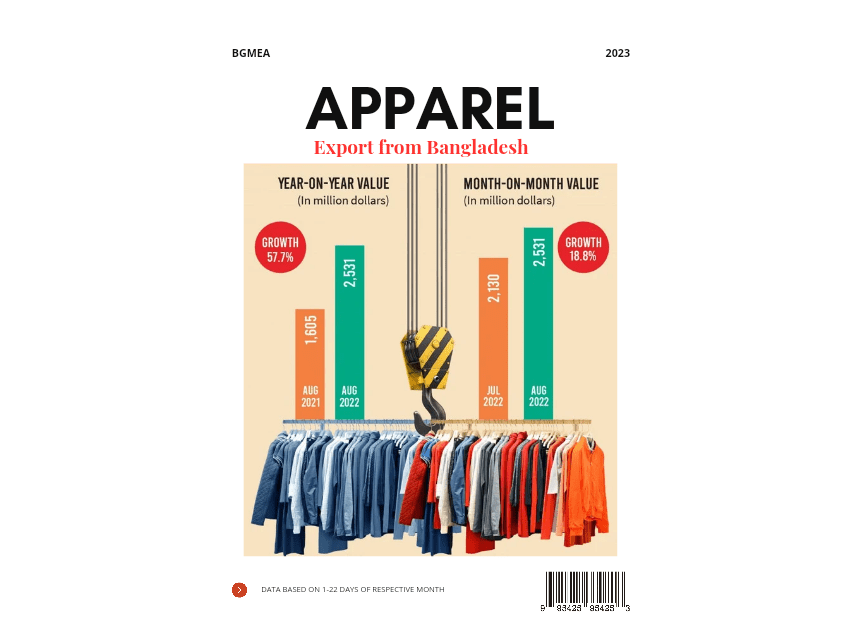The apparel industry of Bangladesh has started its journey in the 1980’s and has come to where it is today. The late Nurul Quader Khan was a pioneer of readymade garments in Bangladesh. He had a dream of how to change the country. In 1978, he sent 130 trainees to South Korea where they learned to make ready-made garments.
The textile and clothing industries provide a single source of growth in Bangladesh’s rapidly developing economy. Exports of textiles and garments are the principal source of foreign exchange earnings. By 2002 exports of textiles, clothing, and ready-made garments (RMG) accounted for 77% of Bangladesh’s total merchandise exports.
According to Export Promotion Bureau (EPB) data, Bangladesh earned $35.81 billion in 2021, up by 30.36%, which was $27.47 billion in 2020.
There is a significant effect of globalization on international textile and apparel trade. Today, the developed countries are hugely dependent on the developing nations for textile and garment manufacturing. At present, Bangladesh ranks second in the world as the largest apparel producers with a $20 billion business in which 80% is earned by exporting goods.

Majority of its exports include polyester fabrics, fabrics made from man-made fibers, PV fabrics, viscose thread fabrics etc. Apparel exports mainly consist of knitted or woven shirts, tops, trousers, skirts, shorts, sweaters and sportswear garments.
Now the apparel industry is Bangladesh’s biggest export earner with value of over $27.9 billion of exports in 2019-20 financial year.
Bangladesh has a great future in textile and garment industries. In fact a major chunk of national income is earned from the foreign currency received from textile and readymade garment exports. The textile and garment sector contributes to 81.43% of the total exports of Bangladesh.
The best trade fair organizer Eco Expo has always stood by the development of this sector.

